Platform: Sega Saturn Genre: RPG Developer: T&E Software Publisher: Atlus Players: 1 Released: 1995
A procedurally generated RPG adventure in a 3D environment. Did that grab your attention? Oh, you want more? How does this sound: an open world to explore, including dungeons AND an overworld with variations in scenery and environmental hazards? An old school dungeon-crawling experience in the tradition of an established series that is published by Atlus, kings of the Persona franchise? And any weapon or armor you equip will be proudly displayed not just in the inventory, but directly on your in-game character.
Sounds swell, doesn’t it? Good! Now, take any expectations you might have and toss them in the trash, because what Virtual Hydlide actually delivers is only so much garbage!
Okay, this accusation might be a bit harsh. After all, there really weren’t many games in 1995 that attempted something of that scope. On the other hand, Virtual Hydlide, the fourth and to date final entry in the Hydlide series of RPGs, not only tried to pull it off on a console but exclusively on the Sega Saturn, no less – a machine that wasn’t exactly known for its 3D capabilities. In fact, it was one of the earliest games released for that console as well, hitting Japanese store shelves on April 22, 1995, shortly before the console’s U.S. release. For what it’s worth, Virtual Hydlide was at the very least an ambitious endeavor, one that hadn’t really been tried in that scope on a console before, even if the experience certainly hasn’t aged well. When the game was released, the idea of a free-roaming, randomly-generated 3D-Action-RPG certainly was fresh and new.
Also, Hydlide had always been a very divisive game series. Yes, it has been categorized as an RPG, and it originated in Japan, but Virtual Hydlide has only very little in common with what modern gamers usually associate with JRPGs – games like Lunar: Eternal Blue, Lufia II, or Chrono Trigger, for example. All those games saw their U.S. release in 1995 as well. Atlus’ product actually plays more along the lines of the Eye of the Beholder trilogy, Dungeon Master II or – to some degree – the later released Diablo, what with the fact that even the gold you collect weighs you down. In fact, I think you can argue that Virtual Hydlide tried to do what Diablo actually accomplished about a year later: revolutionize the dungeon crawler.
Hydlide is, and has always been, reduced to the very essential, basest core gameplay loop of the role-playing game experience as defined by the original Dungeons & Dragons: kill a monster, get loot and experience points, use those to make your character stronger, use stronger character to kill more powerful monsters, and repeat the process until you’re powerful enough to kill the strongest monster there is. The Hydlide games were generally built around there mechanics, with an added need to bring enough food to survive your exploration, little puzzles like needing to find a crucifix before you’re able to kill a vampire, and an encumbrance limit of how much loot and equipment a character can actually carry – all remnants from the earliest days of the core dungeon crawling experience. There’s also a linear overarching quest, which basically boils down to: kill a demon and rescue a princess, but the story isn’t important; it only serves as a guideline on what to do next and an incentive for the player to learn and master the intricacies of the game to perfection. The mechanics aren’t a means to resolve and enjoy the game’s plot; they are the sole purpose of the entire game. RPGs like the original Hydlide were less story-driven adventures and more like intricate puzzles with action elements. What Virtual Hydlide set out to do was to take this basic dungeon crawling approach and bring it into the modern era of 3D environments and fifth generation consoles.
However, even when compared to the games that came before, Virtual Hydlide seems a bit too streamlined. Regardless of what you think of the Hydlide series as a whole, when it comes to gameplay features the fourth game appears rather lightweight. Just compare it to what the precious installment, Super Hydlide on the Genesis, had to offer. Character creation? Gone. Multiple character classes? Gone. A morality meter, distinction between good and evil monsters, or an in-game passage of time? Gone, gone, and gone. Weapons, magic spells, or protective items? Significantly reduced. There aren’t even any shops, towns, or NPCs to talk to. Essentially, what Virtual Hydlide boils down to is a 3D remake of the first game in the series, including its questline. Only this time, it has even fewer features than that, since gathering experience is also gone. Now, you only level up after completing quest objectives, which means that battling any monsters aside from a handful of bosses is essentially pointless – you might just as well run past them whenever you’ve got the space to do so. What’s also gone is the need to stock up on food items in order not to starve to death during your quest. While some would call that an improvement, it also removes one of the core experiences that made a Hydlide game… well, a Hydlide game.
Even detractors of the series usually argue that Super Hydlide at least had some really good music going for it. Virtual Hydlide’s soundtrack, while not necessarily bad, is just not as memorable. The music has a certain subdued synth, orchestral flair that sounds nice at first but doesn’t fit very well with the action onscreen. The sound effects, on the other hand, are pretty weak and of a very low quality. There are also a few speech samples, or at least sound bits that sound like speech, but I dare you to try and decipher what they actually say.
One of the more interesting aspects of Virtual Hydlide is that for each new game, it randomly creates all the environments, including overworld, dungeons and item placements. Even if the overlying quest and the process towards its resolution remains the same. It technically promises a fresh new experience for every new game you start. You can also enter a code manually to generate the world, which makes exploring an already familiar map with fixed locations possible. All that doesn’t change the gameplay experience all that much. While you can technically go everywhere from the get-go, the map isn’t very big, and solving the quest is a relatively linear experience where you just follow the compass to the next destination you need to go, picking up items and killing running past monsters along the way. It might explain why Virtual Hydlide removed the need for food items or shops in general, as not knowing in what direction or distance the nearest source for buying healing items or the ever-diminishing nourishment lies would be an exercise in frustration.
In lieu of shops, there’s a pink crystal in the overworld. It is a safe point without enemies where you can dump all the items you’ve accumulated there in order to make room in your inventory. You can’t cash them in for gold, though, and you can’t buy anything for the gold you can find in the course of your adventure (what is the gold used for then, you ask? Beats me, really. Apparently it serves as bonus points to determine your final score after you’ve finished your quest, which is saved in a high score table). Rather counter-intuitively, you can use the SCORE you’ve accumulated during gameplay to purchase items like weapons, armour, and shields, rings that further increase your stats, five different kinds of magic scrolls, tools, and potions. Buying weapons or protective items is rather pointless though, considering that you generally gain everything you need in treasure chests. What IS useful to purchase are the Scrolls of Detect, which shows the location of said chests on your map screen. What’s also good to have are some Scrolls of Herb that magically changes any item you use it on into a curative herb. That doesn’t just heal you or helps clearing out some much-needed inventory space, it also gets rid of unwanted cursed items that lower your stats and can’t be removed in a regular fashion. Normally, you would need a (slightly more expensive to purchase) Scroll of Purge to remove a curse, but you can just as well simply turn the cursed item into an herb. This seems to be a programming oversight, because it renders the Scroll of Purge essentially pointless.
All of that brings us to the 3D environment, the major selling point of Virtual Hydlide. Let’s state something positive for a change: at least it’s not the kind of low-poly 3D environment the early fifth console generation was notorious for. There certainly aren’t any untextured, blocky polygon characters to be found in this game. It might even look halfway decent in screen shots, if a bit grainy. Seeing the game in motion is a different story, though. Virtual Hydlide uses digitized 2D sprites for character models that get scaled up or down accordingly as you approach or distance yourself from them in the game world. Worse, everything only has very choppy, limited frames of animation. Not only is it very hard to properly judge your distance to any given enemy or environmental obstacle like trees that way, the frame rate is also very low. You cannot control the camera, which can become an issue in dungeons when it has trouble positioning itself in such a way that the view isn’t blocked by a wall. Occasionally, your character clips through the scenery. Needless to say, this all adds up to some pretty janky gameplay. The graphics are also extremely pixelated, with washed out colors that are usually in the dark green, dark brown and grayish areas of the color spectrum
Speaking of not looking good, the player character’s sprite is a digitized actor, and it looks incredibly dorky. His walking animation gives the impression of a severe case of constipation rather than that of a purposeful stride, his attack moves look very awkward and never feel like they ever actually connect with anything, and his general appearance… well, as I said earlier, you DO see every equipment you wear on your actual in-game character sprite, but the armour your wear usually looks like a very cheap prop. Most of the weapons are sprites that have been digitally added to your character’s hand, which makes them look like they’re not actually there… and the less said about the Fairy Armor, the better. At least the dungeons themselves have textured walls that enable a certain feeling of scale and depth, and some of them even span multiple levels, but I wouldn’t blame you if you hadn’t lost your patience with the game by then. Stick to it though, and you realize that it is rather short, depending on how lucky you get with the world map creation, it can actually be finished in under two hours.
Some reviews of Virtual Hydlide were actually quite positive back in the day, and I can sort of see why. As a very early 3D RPG on the Saturn, there was little to properly compare it to, either in terms of game design or on the platform in general. In the early days of the fifth console generation, the idea of using digitized sprites in a freely explorable 3D world – and with an orchestral soundtrack and a procedurally-generated environment to boot – must’ve seemed quite impressive. Both intro and end sequences were even presented as short videos! But compared to later releases on the system, the game just doesn’t hold up. Virtual Hydlide offered fewer features than its predecessors, and what was sacrificed was traded in for murky digitized graphics that have aged horribly, awkward gameplay, and a randomly-generated world that might sound great on paper but offers very little meat when it comes to actual content. Within about a year and a half, games like Tomb Raider or Powerslave came along that demonstrated much better and smoother 3D environments on the Saturn. When Diablo was released in 1996, it changed the face of the dungeon crawler forever, rightfully relegating the style of Virtual Hydlide to the realms of oblivion.
Score: 2 out of 10

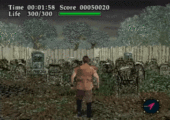
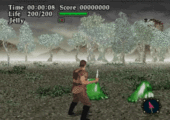
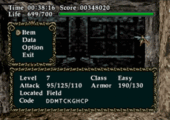
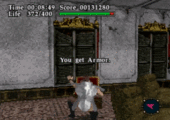
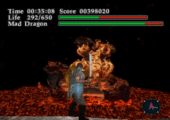
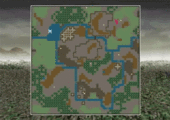
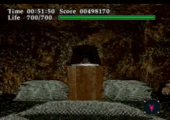
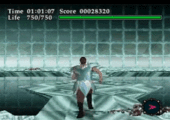

Recent Comments